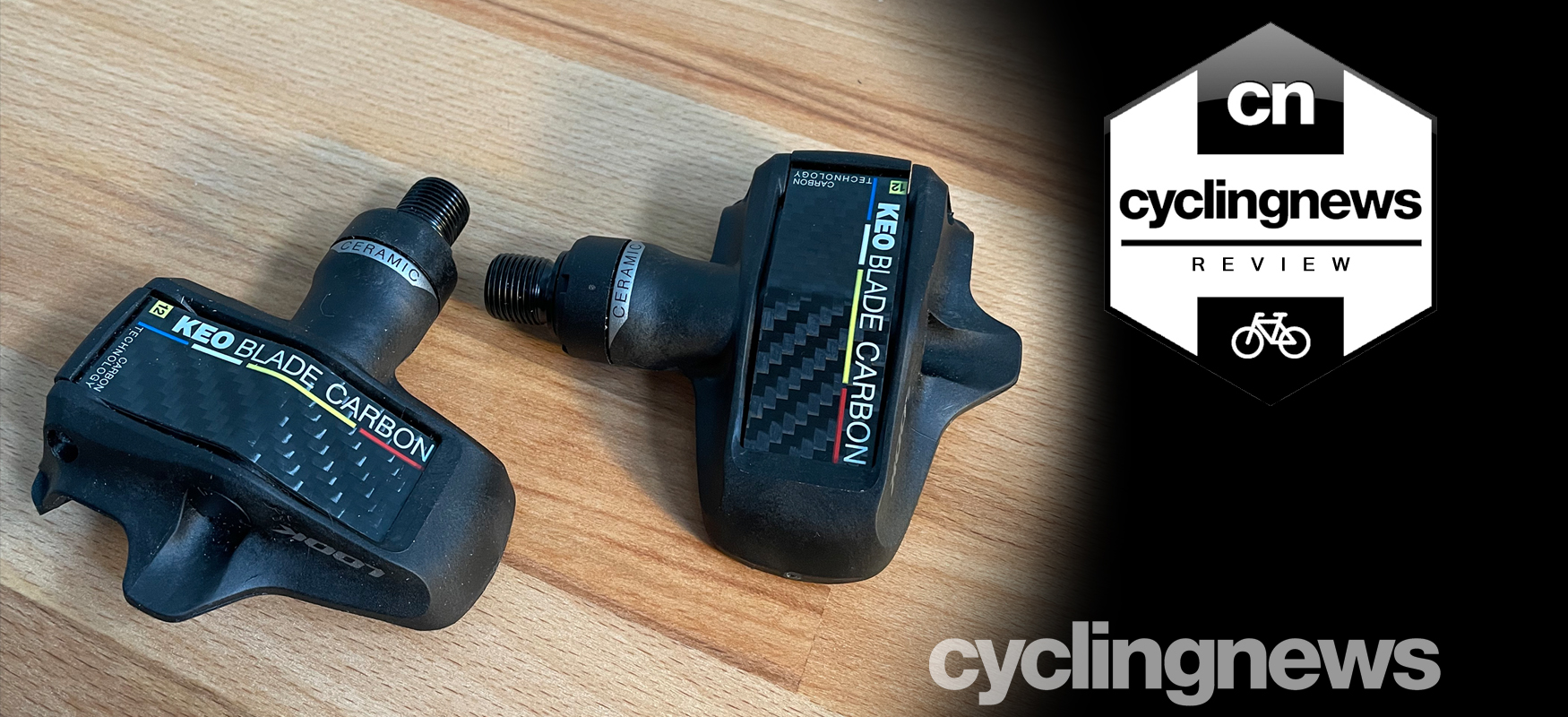Cyclingnews Verdict
A perfectly competent pedal, but tension adjustment is laborious, they're prone to creaking, and overall, they don't shine above the Keo Classic or Shimano's similarly-priced options.
Pros
- +
Low weight
- +
Styling and design
- +
Availability of replacement cleats
Cons
- -
Changing springs to adjust release tension
- -
No grippers on cleats
- -
Cleats prone to noise
You can trust Cyclingnews
The Look Keo Blade Carbon Ceramic pedal sits second from the top of its pedal range, with the Titanium version above it. It is priced at £180.00 ($250.00 / €194.00), which puts it in the middle of Shimano's Ultegra and Dura-Ace options and on a similar level to Wahoo's Speedplay Zero, although it's not uncommon to find them reduced.
With all of the features of the range-topping model and the only penalty being a slight weight gain, how do they stand up against the rest of the best road bike pedals available?
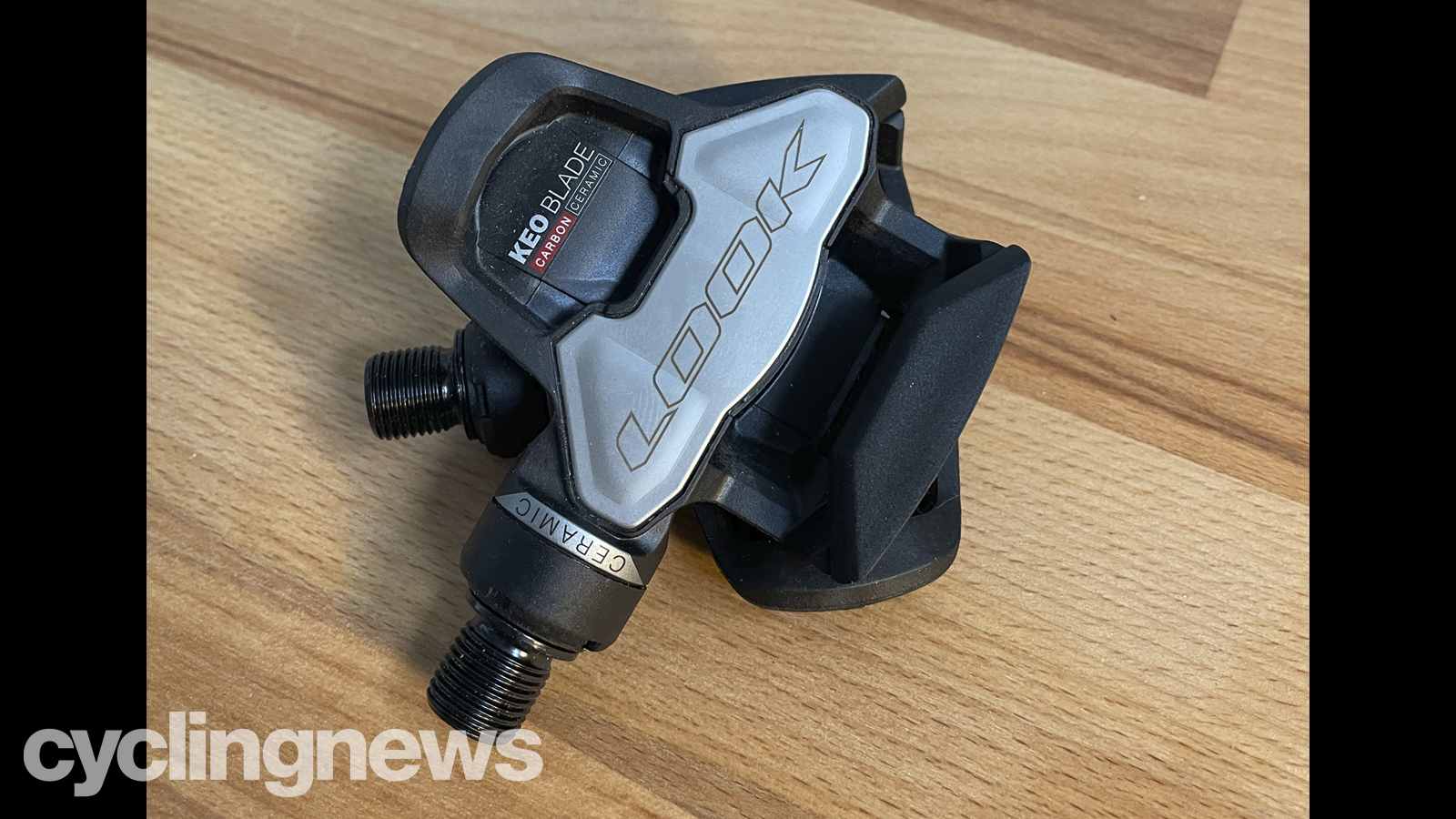
Design and aesthetics
Visually the design of the Look Blade pedals is certainly very striking with the broad platform and carbon blade making up the majority of the top and bottom of the pedal, and they certainly look high-end.
With only the range-topping mouthful Look Keo Blade Carbon Ceramic Titanium sitting above it, these pedals are nearly identical both visually and functionally, with the hardened steel axle being the main difference from the titanium model. Both versions feature a low stack height of 14.8mm, a broad stainless steel pedalling platform, and the carbon 'blade' retaining spring on the bottom of the body.
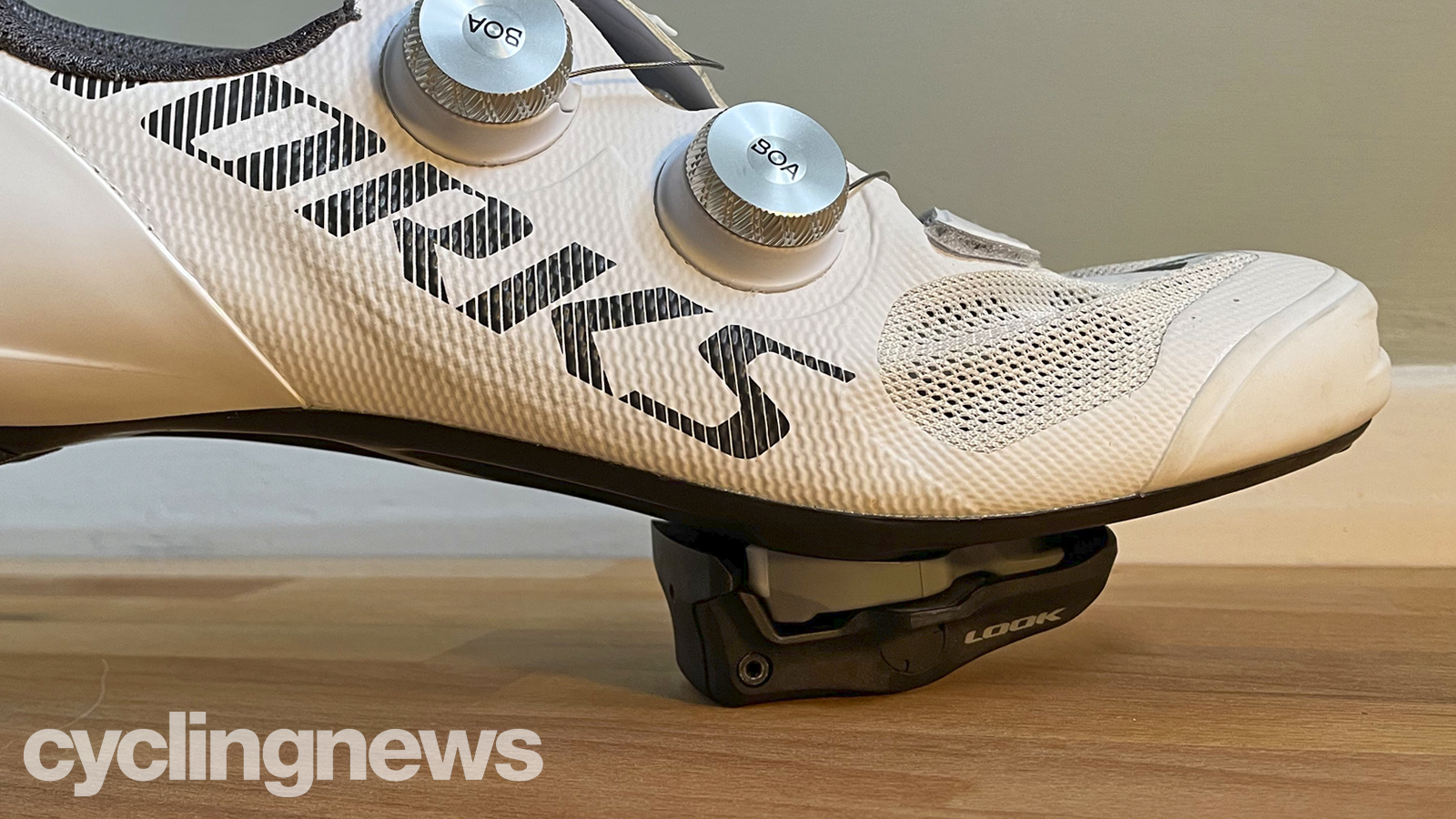
Weighing in at 116g per pedal, they are only bested by the Wahoo Speedplay Zero and the Wahoo Speedplay Nano for a pedal-only weight on our scales, but once you include the cleat and hardware it swings back in favour of the Look by 34g and 39g respectively. The crown for the lowest weight combination goes to the Dura-Ace 9100 pedal with a combined weight of 136g for the pedal and cleat, but the Look Keo Blade Carbon Ceramic comes in a very close second with a combined weight of 137g.
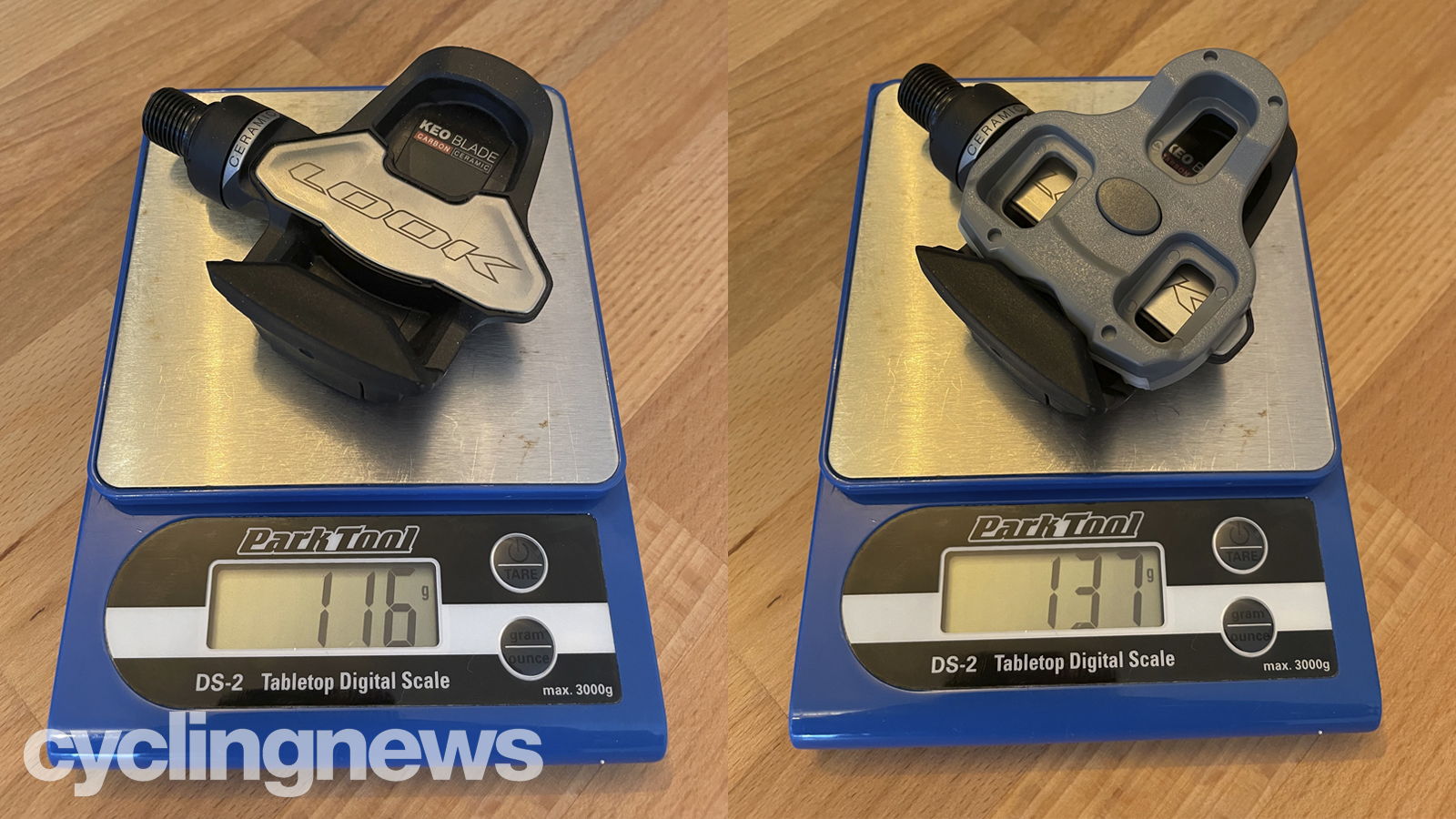
Performance
As with all of the pedals on test, the installation was straightforward: regular thread on the drive-side, reverse thread on the other and an Allen key to tighten them up. Cleat setup has been the main differentiator with how straightforward or difficult each pedal has been to set up. All the Look pedals feature a three-bolt cleat, similar in setup to Shimano’s SPD SL platform but with a few differences. The material of the Look cleat supplied with the Keo Blade Carbon Ceramic pedals is a hard grey plastic, with harder wearing white sections at the front and rear of the cleat. These offer 4.5 degrees of float (the amount you can twist your foot while remaining clipped in), but 0-degree and 9-degree float options are also available aftermarket.
In the setting up of the cleats on my shoes, I found the hard plastic of the Look cleat slightly more difficult than Shimano's SPD-SL cleat, as it tended to slide around on the base of the shoe more while trying to make small adjustments. Not a major disadvantage by any stretch, but worth mentioning.
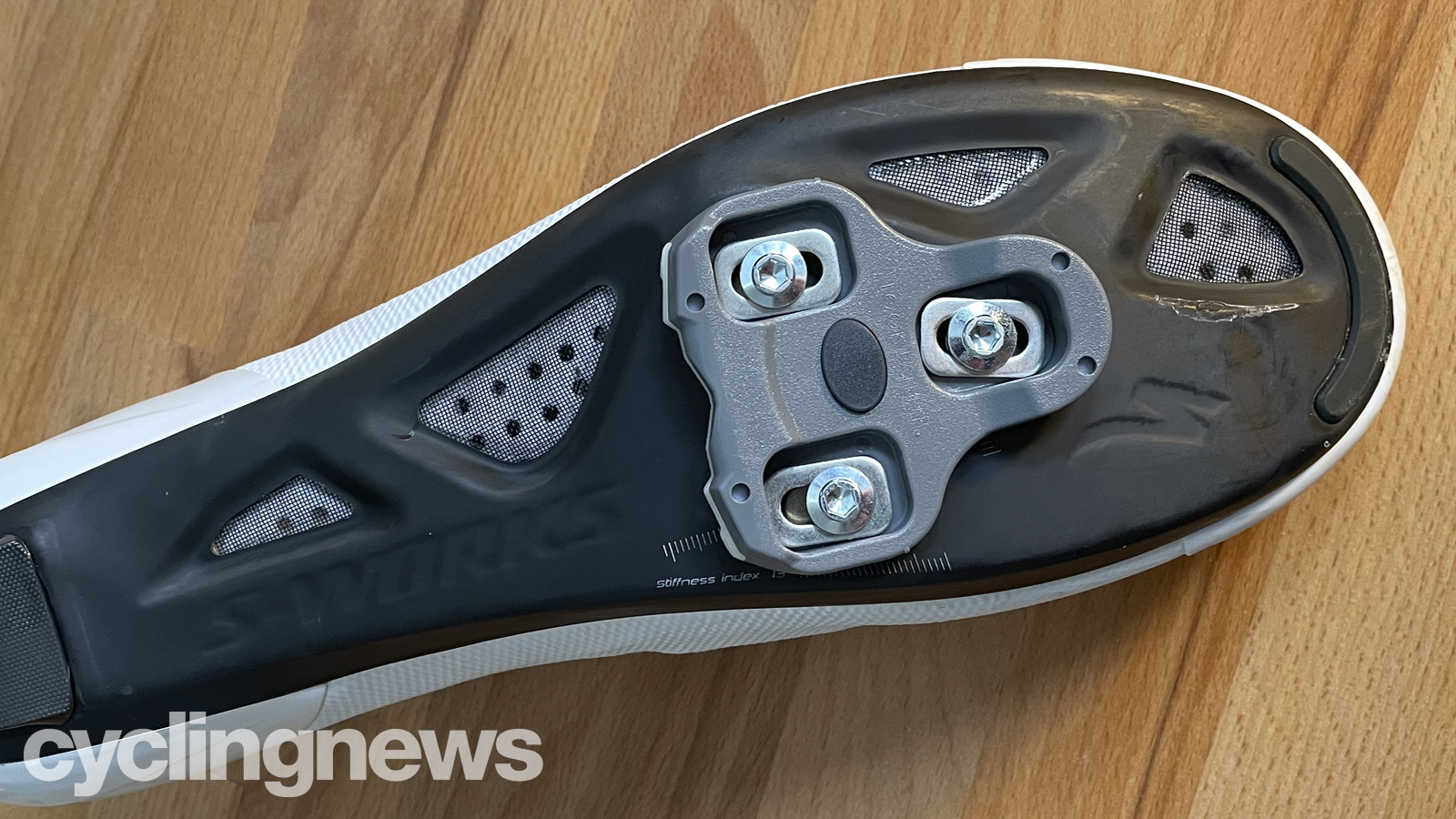
The point I found most bemusing about the supplied cleats was the complete lack of any added grip sections or surface. These are known simply as the Look Keo cleats, and they are by far the worst for grip if you're trying to walk about in your cycling shoes. Tiled floor in your favourite café? Make sure there is a handrail to grab when your feet decide they’re going one way and your body the other.
The thing that makes this even more confusing is the two other Look pedals on test - the Keo 2 Max Carbon and Keo Classic - are supplied with the Look Keo Grip cleat - which are similar grey cleats made of the same base material, but with an added grip section at the front and rear. The trade-off in those is you lose the harder wearing sections at each end, so you'll need to decide between a cleat that offers less grip or a cleat that wears out faster? It must be possible to combine the benefits of both cleats to create a hard-wearing cleat that also offers grip, but Look is yet to find this solution.
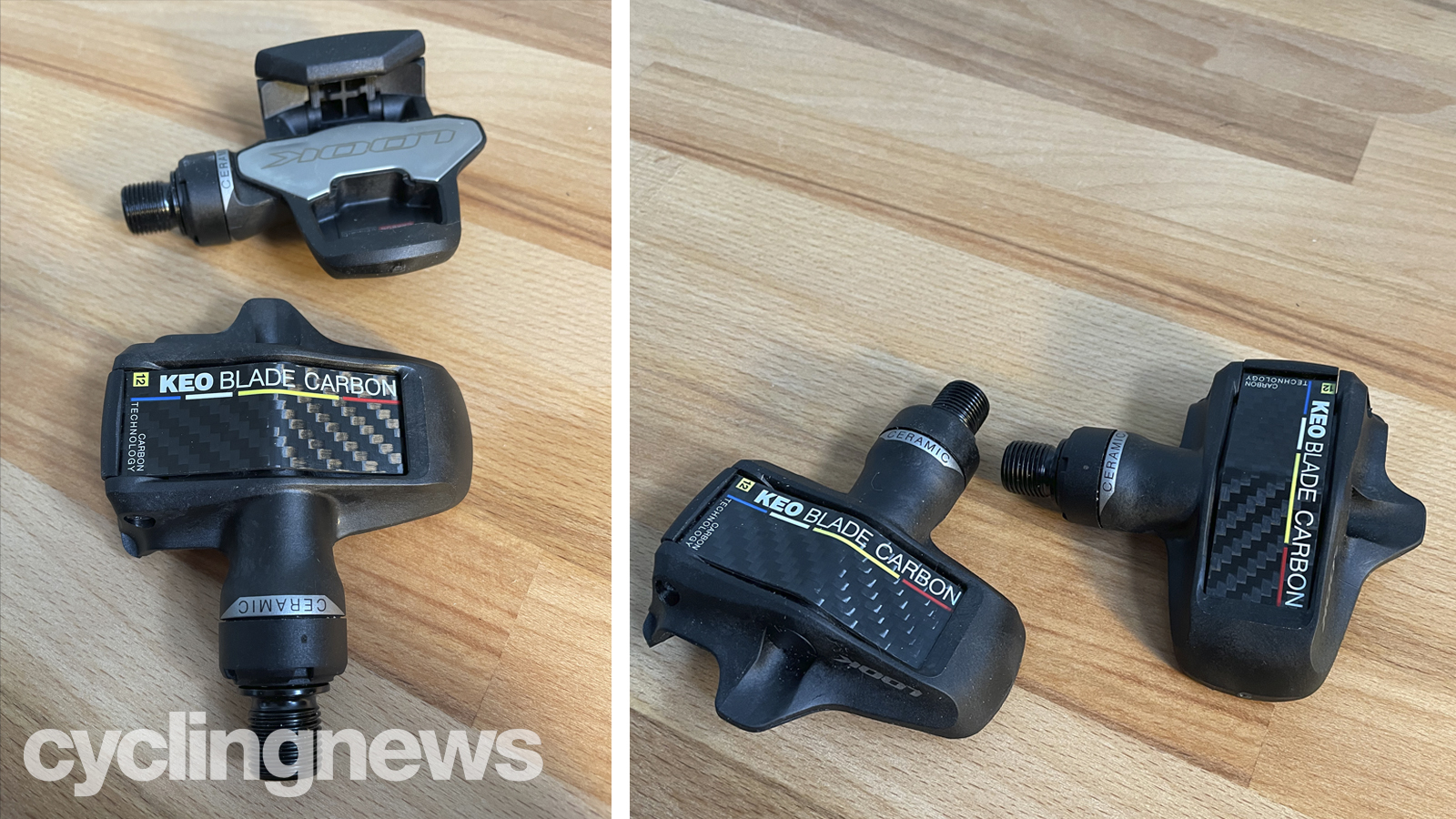
Once you have your cleats set up and you’re ready to ride, the experience on the bike is an enjoyable one, clipping in is positive and secure, there’s that previously mentioned very wide steel platform to support your foot and stop any off-axis roll while you’re pedalling. The fitted 12 Nm springs offer a nice clipping in and out tension with a 16 Nm carbon ‘blade’ spring included with the set. I didn’t try swapping the springs over as I found the included ones to be of adequate tension. It’s a relatively simple procedure to swap from one tension spring to the other, involving 2 Torx keys, a pin drift and a torque wrench, but this is still much more complicated than either of the other two Look pedals on test or any of the Shimano pedals. Wahoo, meanwhile, does not offer any adjustment to the release tension, short of swapping cleats altogether.
Another point to mention about the Look pedals is that of all the pedals on test, they were the most prone to making noise or creaking in use, something I have found to be true with all the Look pedals I tested. If you cause any damage to the surface that contacts the pedal - walking on gravel for example - this causes the pedal/cleat to creak if your foot is anything but stationary while pedalling. While this doesn’t make the pedal any less functional, it is annoying, especially for everyone else if you’re the person bringing the creaky cleats to the group ride.
Verdict
While there isn’t anything functionally wrong with the Look Keo Blade Carbon Ceramic pedals they do come up against some stiff competition. The Look Keo Max 2 offer the same wide pedalling platform, adjustable retention without swapping springs and the cleat with the grip sections all with only a 16g penalty to the Keo Blade. The Keo Blade Carbon ceramic is a perfectly competent pedal, but when faced with such stiff competition from in-brand rivals, let alone other brands, it doesn’t shine.
Also consider
- Look Keo Classic 3 pedals: Heavier, but cheaper and with easier cleat retention adjustment
- Shimano Ultegra pedals: Shimano's closest rival is slightly cheaper, easier to adjust, but slightly heavier
- Shimano Dura-Ace pedals: Shimano's top-tier pedal is lighter, easier to adjust, but slightly more expensive
Tech Specs: Look Keo Blade Carbon Ceramic pedals
- Price: £180.00 / $250.00 / €194.00
- Weight: 232g (pair)
- Weight with cleats: 274g (pair)
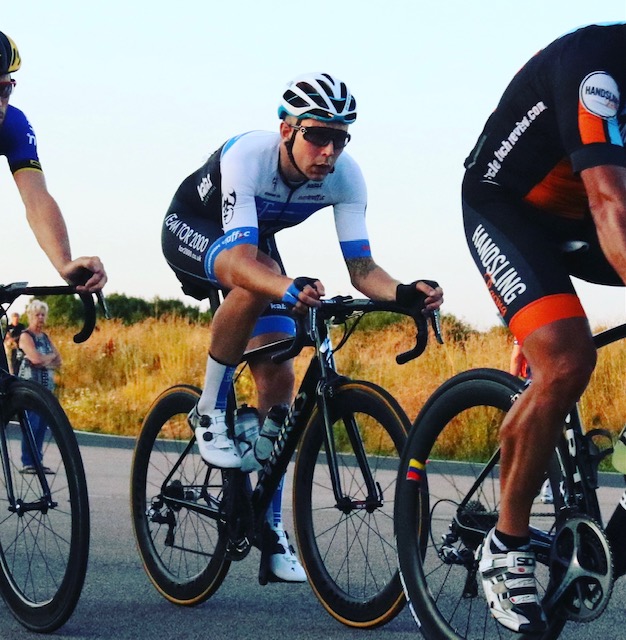
Peter has been riding and racing road, CX, and mountain bikes since the early 2000’s. He spent a decade working at a large independent bicycle shop, handling customer service, warranty and technical questions. Thanks to an obsession with product details he loves nothing more than picking over the newest tech.
Peter is a fastidious mechanic and will not settle for anything less than perfect when it comes to bike setup, whether it be a child first bike or a highly integrated top-tier time trial or road bike.
He’s been writing for Cyclingnews since 2020 as a Contributing Writer, where having a 50km commute to his day job allows him to quickly rack up the miles when putting any new products to the test in all weathers.
He currently rides one of the following: Specialized Tarmac SL6, Basso Diamate, Talbot Frameworks steel road, Trek Emonda ALR, Specialized Crux, Santa Cruz Tallboy.
